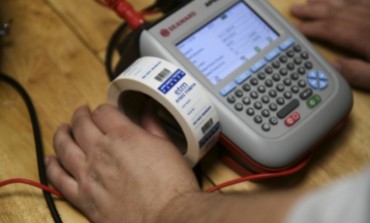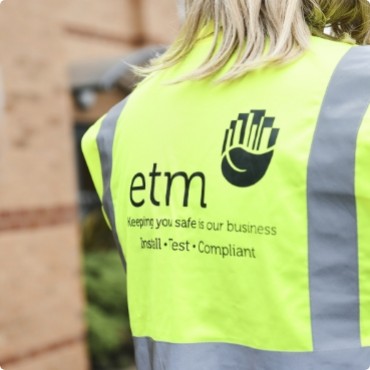For business owners across the UK, electrical safety isn't just about keeping the lights on, it's about keeping your people safe and your business compliant. Whether you're running a small office, managing a factory floor or overseeing a retail operation, understanding PAT testing could save you from costly accidents, legal headaches and operational disruptions.
This comprehensive guide will walk you through everything you need to know about Portable Appliance Testing, from the legal requirements that could land you in hot water to the practical steps that will keep your business running smoothly.
What is PAT Testing?
PAT testing, or Portable Appliance Testing, is the systematic examination and testing of electrical appliances to ensure they're safe for use. Despite its name suggesting only "portable" items, PAT testing actually covers any electrical equipment that can be moved or has a flexible cable – from desktop computers and kettles to industrial machinery and extension leads.
The process involves both visual inspections and electrical tests using specialist PAT testing equipment. A qualified technician will examine each appliance for signs of damage, wear or potential hazards, then conduct electrical tests to verify the appliance's safety features are working correctly.
Think of it as an MOT for your electrical equipment. Just as your car needs regular checks to stay roadworthy, your electrical appliances need regular testing to remain safe for workplace use.
Is PAT Testing a Legal Requirement?
Here's where many business owners get confused – and it's a confusion that could prove expensive.
PAT testing isn't explicitly required by name in UK law. However, the Electricity at Work Regulations 1989 place a clear legal duty on employers to ensure all electrical equipment in the workplace is maintained in a safe condition. This means you must be able to demonstrate that your electrical appliances are safe.
The Health and Safety Executive (HSE) recognises PAT testing as an effective way to meet this legal obligation. While you might technically comply through other methods, PAT testing provides the clearest evidence that you've taken reasonable steps to ensure electrical safety.
The key regulations you need to be aware of include:
- The Electricity at Work Regulations 1989 – These place absolute duties on employers to ensure electrical systems are safe and properly maintained.
- The Health and Safety at Work Act 1974 – This creates a general duty to ensure the health, safety and welfare of employees.
- The Provision and Use of Work Equipment Regulations 1998 (PUWER) – These require that work equipment is maintained in an efficient state and good repair.
- The Management of Health and Safety at Work Regulations 1999 – These require employers to conduct risk assessments and implement control measures.
Failure to comply isn't just about potential accidents. The HSE can issue improvement notices, prohibition notices, and even prosecute. In 2023, the average fine for health and safety breaches was £156,000, with some companies facing penalties exceeding £1 million.
What Equipment Needs PAT Testing?
The scope of PAT testing extends far beyond what many business owners initially consider. Any electrical equipment that could reasonably be moved or has a flexible cable should be included in your PAT testing programme.
- Class I Equipment - includes items with metal cases that rely on earthing for safety, such as desktop computers, printers, microwaves, and most power tools. These typically require annual testing due to their reliance on earth connections.
- Class II Equipment - covers double-insulated items like laptop chargers, some power tools, and many modern appliances. These generally need testing every two years as they don't rely on earthing for protection.
- Portable Equipment - encompasses anything designed to be moved while in use or easily moved from place to place – think laptops, power tools, vacuum cleaners, and portable heaters.
- Moveable Equipment - includes larger items that aren't normally moved but could be, such as photocopiers, large printers, and some kitchen appliances.
- Fixed Equipment - anything with flexible cables also falls under PAT testing requirements. This includes items like hand dryers, some lighting fixtures, and equipment permanently installed but connected via flexible cables.
- Extension Leads and RCDs - these are critical components that many overlook. These safety devices protect other equipment and need regular testing to ensure they'll function correctly when needed.
Common workplace equipment requiring PAT testing includes desktop computers, monitors, printers, photocopiers, kettles, microwaves, vacuum cleaners, power tools, extension leads, desk lamps, phone chargers, projectors, speakers and any equipment brought from home for work use.
How Often Should PAT Testing Be Done?
The frequency of PAT testing isn't arbitrary – it's based on the risk associated with different equipment types and environments.
High-Risk Environments
Environments such as construction sites, industrial facilities or areas with harsh conditions are considered 'high-risk' and so will typically require testing every 3-6 months. The combination of demanding conditions and safety-critical applications means equipment deteriorates faster and failures pose greater risks.
Medium-Risk Environments
Slightly less urgent but still requiring regular PAT testing are medium-risk environments. This includes offices, shops and schools, and will generally need annual testing for most equipment. This frequency balances safety requirements with practical considerations and costs.
Low-Risk Environments
Lower-risk sites and environments such as offices with minimal equipment handling might extend to every 2-4 years for some low-risk items, though annual testing remains the most common approach.
Equipment-specific frequencies also matter. Power tools and equipment subject to regular handling typically need annual testing. IT equipment in office environments often requires annual testing due to constant use. Kitchen appliances and equipment in communal areas usually need annual inspection due to higher usage and potential for damage.
However, these are guidelines, not rigid rules. Your specific risk assessment should determine the appropriate frequency for your situation. Factors to consider include the type of equipment, how it's used, the environment it operates in, the age and condition of the equipment and the consequences of failure.
The PAT Testing Process Explained
Professional PAT testing follows a systematic approach designed to identify potential hazards before they become dangerous.
Visual Inspection
This forms the foundation of any PAT test. The technician examines the equipment for obvious signs of damage such as cracked casings, damaged plugs, frayed cables, burn marks, missing screws or guards, and signs of overheating or electrical damage.
This visual check catches approximately 90% of potentially dangerous faults – highlighting why it's such a critical component of the testing process.
Electrical Testing
Broad in definition, electrical testing involves several specific tests depending on the equipment type. Earth continuity testing verifies that safety earth connections are intact and provide adequate protection. Insulation resistance testing checks that electrical insulation hasn't deteriorated to dangerous levels. Polarity testing ensures that electrical connections are correct. Functional testing verifies that safety features like RCDs operate correctly.
Documentation and Labelling
This step completes the PAT testing process for most companies. Each tested item receives a unique identification number and pass/fail label showing the test date and next test due date. Detailed records are maintained showing test results, any remedial actions taken, and equipment history.
Failed equipment is immediately removed from service or repaired before being retested. This prevents dangerous equipment from remaining in use and demonstrates your commitment to electrical safety.
Choosing the Right PAT Testing Service
Selecting a competent PAT testing provider is crucial for ensuring compliance and protecting your business. Qualifications and Competence should be your first consideration. Look for technicians with relevant qualifications such as City & Guilds 2377 PAT Testing certification, 17th Edition Wiring Regulations knowledge, and experience in your industry sector.
Equipment and Methods matter significantly. Professional services use calibrated PAT testing equipment, follow industry best practices, provide comprehensive documentation, and offer flexible scheduling to minimise business disruption.
Insurance and Compliance are essential protections. Ensure your chosen provider carries adequate public liability insurance, professional indemnity cover, and follows current industry standards and HSE guidance.
Service Scope should match your needs. Consider whether you need equipment labelling and certification, detailed reporting and recommendations, remedial work capabilities, and ongoing support and advice.
Common PAT Testing Mistakes to Avoid
Many businesses fall into predictable traps that can compromise both safety and compliance. So here's just afew of the most common mistakes and pitfalls you should have in mind to avoid:
- Inadequate record-keeping represents a significant risk. Failing to maintain proper documentation, using unclear or inconsistent labelling systems, and not tracking equipment history can leave you unable to demonstrate compliance when required.
- Inappropriate testing frequencies either create unnecessary costs or fail to ensure safety. Testing too frequently wastes resources while testing too infrequently may not catch deteriorating equipment before it becomes dangerous.
- Scope limitations often occur when businesses focus only on obvious equipment while overlooking items like extension leads, equipment in storage areas, or personal devices used for work purposes.
- Ignoring failed equipment presents serious risks. Equipment that fails PAT testing must be immediately removed from service or properly repaired and retested before continued use.
The Business Case for Professional PAT Testing
Beyond legal compliance, professional PAT testing offers clear business advantages. It mitigates risks by preventing accidents that could cause injuries, property damage, downtime, and reputational harm, while also ensuring insurance compliance since many policies require regular testing to remain valid.
It also safeguards productivity by detecting faults early, allowing planned maintenance instead of costly breakdowns. At the same time, it strengthens your professional image by demonstrating your business's commitment to safety and compliance - an asset when winning contracts or working with safety-focused clients.
Staying Compliant and Safe
PAT testing is a vital part of electrical safety management that no business can afford to ignore. Success depends on understanding legal obligations, assessing risks, setting appropriate testing schedules, choosing competent providers, and keeping thorough records. Electrical safety isn’t a one-time task—it requires regular attention and adaptation as your business evolves.
At Electrical Test Midlands, we tailor PAT testing programmes to your specific needs while ensuring full legal compliance. Our experienced technicians use the latest equipment and follow industry best practices to keep your business safe, compliant, and running smoothly. Don’t wait for accidents or enforcement action. Contact us today to protect your people, your business and your peace of mind.

PAT Testing Offer
We are committed to ensuring the safety and compliance of your electrical equipment through our professional Portable Appliance Testing (PAT) services.
As a token of our appreciation for choosing us, we’re excited to offer you an exclusive 10% discount on all PAT testing services!
FIND OUT MORE





